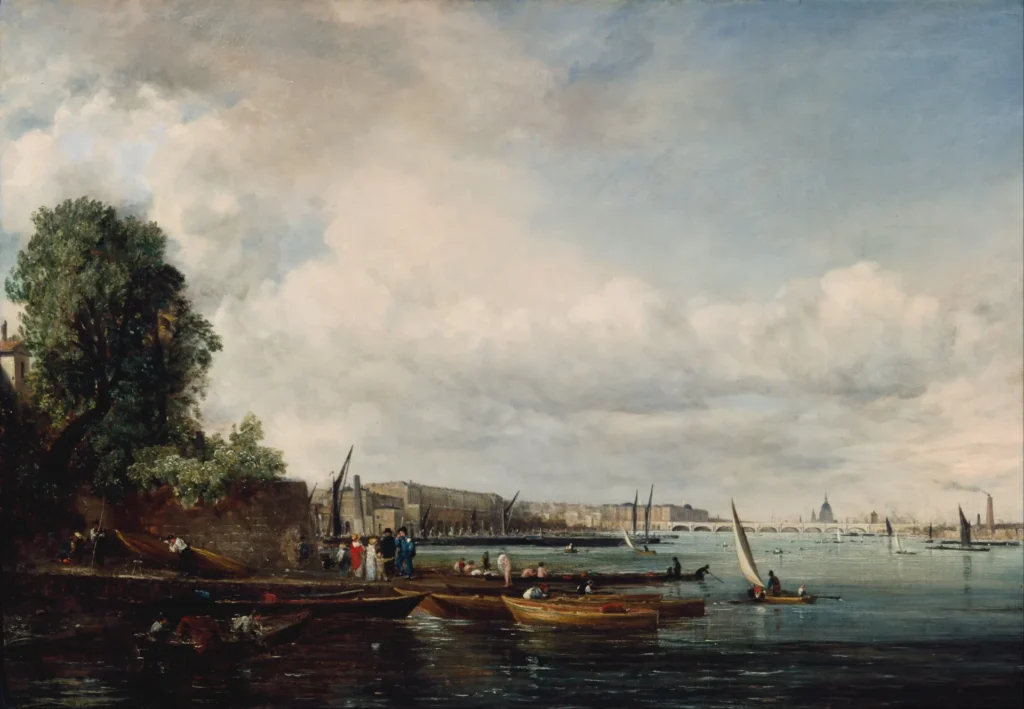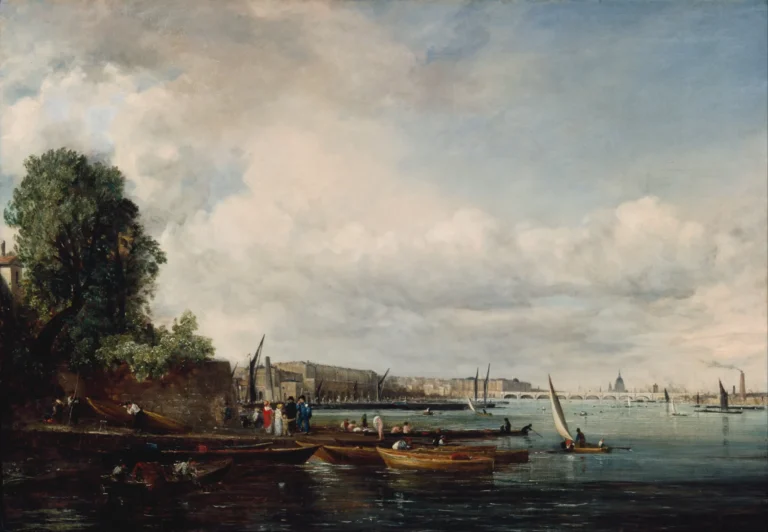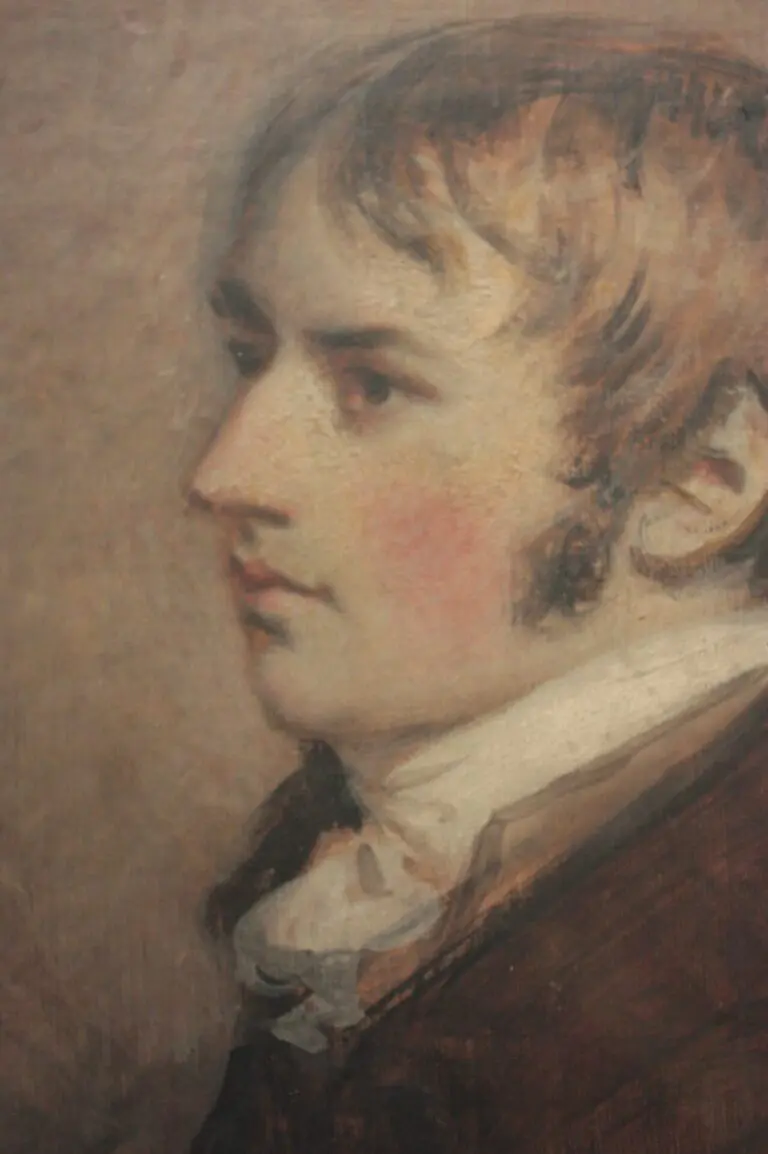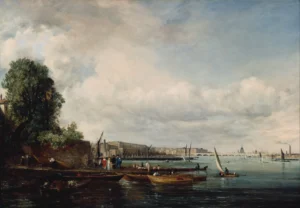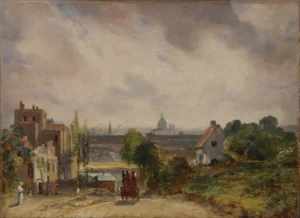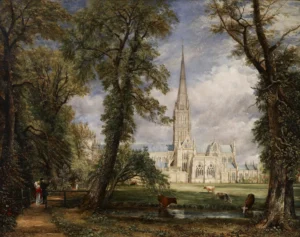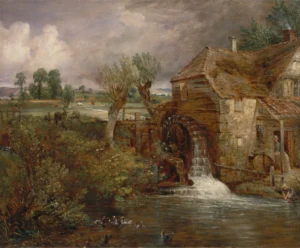Waterloo Bridge
John Constable's series pertaining to Waterloo Bridge offers a fascinating glimpse into early 19th-century London. The major work, 'Waterloo Bridge (1820),' and its accompanying studies explore the Thames' vitality through dynamic scenes filled with boatmen, bathers, and significant architecture. His style reflects influences from Canaletto and holds unique historical significance, depicting the grand opening of the bridge and urban life along the river.
Early 19th Century (1820 - 1832)
About the Artwork
Did You Know
Liked what you see? Add it to your collection.
Enjoyed reading? Share it.
... continued
Waterloo Bridge (1820)
This painting, now in the Cincinnati Art Museum, Ohio, is a riverscape depicting Waterloo Bridge from the left bank of the Thames. It shows the bridge, which had been opened three years earlier, along with other London landmarks such as Somerset House and St. Paul's Cathedral. The foreground features boatmen, barges, and bathers. This work is notable for its Canaletto-like style, as described by Constable's patron, John Fisher.
Study for Waterloo Bridge (RA Collection)
This oil sketch, part of the Royal Academy Collection, is a rapidly painted study that also depicts Waterloo Bridge with Somerset House and St. Paul's Cathedral in the distance. The scene is busy with boatmen, barges, and bathers. This sketch is closely based on a drawing and may have been painted in the studio rather than as a plein-air study. It includes the wall of Fife House and a large tree from its garden.
The Opening of Waterloo Bridge ('Whitehall Stairs, June 18th, 1817')
This larger painting, exhibited at the Royal Academy in 1832, commemorates the opening ceremony of Waterloo Bridge. It shows decorated barges filling the river and captures the events of June 18th, 1817. Constable made several studies for this seven-foot canvas, including one at the Clark Art Institute titled 'Waterloo Bridge Seen from Whitehall Stairs,' which features ceremonial river barges and spectators.
Conservation and Display of The Opening of Waterloo Bridge
The largest known painting by Constable, 'The Embarkation of George IV from Whitehall: the Opening of Waterloo Bridge, 1817,' was conserved by the National Trust and is now displayed at Anglesey Abbey in Cambridgeshire. This painting, which was never exhibited in Constable's lifetime, shows the opening ceremony and the Thames waterfront as it appeared 200 years ago. It is influenced by Canaletto’s water pageants and provides a detailed view of the historical event.




